 From the Desk of Gus Mueller
From the Desk of Gus Mueller

In December 2010, I was finishing my 17th year of doing a monthly column for an audiology trade journal. For many reasons, it seemed like a good time to make a change. I’d had some interactions with a rogue Internet journal called AudiologyOnline whose Editor in Chief at the time, Paul Dybala, was an old friend going back to his UTD college days. He seemed to be having more fun running a journal than should be allowed. Along with great content, AudiologyOnline had interesting contests, zany editorials, and other quirky features such as “Talk Like a Pirate Day Audiology News.”
I gave Paul a call and soon after, my monthly column “Page Ten” became “20 Questions” at AudiologyOnline. I learned that I’d mostly be working with the new Managing Editor, Carolyn Smaka. We wrote our first piece together shortly after I started—a press release from the International Committee of Speech Recognition Measures (ICSRM) titled “Say Goodbye to Laud”. It detailed how the word “laud” would be eliminated from the NU#6 word list for clinical testing, and it published on April 1st, 2011 (note the date: April 1st). We didn’t have this kind of fun at that other journal.
And here we are today, still having fun and going into our 10th year. We have nearly 100 20Qs in the vault, and it’s a very impressive collection. The timing seemed right to look back and pick some of our favorites from over the years, and to my delight, Carolyn volunteered for this difficult task.
Carolyn is now editor in chief at continued, the parent organization of AudiologyOnline, where she manages a team of editors responsible for the company's continuing education courses across its learning spaces and professions. She is a recipient of the Joel Wernick award from the Academy of Doctors of Audiology, in recognition of her outstanding educational contribution within the profession of audiology. Prior to joining AO, she worked as a clinical audiologist, spent 9 years at a leading hearing aid manufacturer, and, get this . . . her first career path was working as a speech-language pathologist!
Dr. Smaka has served on several different committees of the AAA and currently chairs the outreach subcommittee for the 2020 conference. Outside of audiology, one of her passions is volunteering with ScholarMatch.org as a college coach for underserved high school students.
Fortunately for us, Carolyn found some time in her busy schedule to look through our collection of 20Q articles and pick a few favorites. See if you agree, and maybe you’ll spot a few others to add to your reading list.
Gus Mueller, PhD
Contributing Editor
Browse the complete collection of 20Q with Gus Mueller CEU articles at www.audiologyonline.com/20Q
20Q: Ten Years of Expert Insight and Resources
Learning Outcomes
After reading this article, audiologists will be able to:
- Provide a rationale for offering tinnitus and hyperacusis services and list resources to get started.
- Explain sources of disruption to the audiology profession, and how audiologists can adapt their products and services to best position their practices for the future.
- Define autoREMfit, SII, and outcome measures, explain their relevance to hearing aid fitting, and list resources for more information.
- List current clinical topics in pediatric audiology and access resources for further in-depth information.
 Carolyn Smaka
Carolyn Smaka1. Well, Happy Birthday 20Q! Has it been 10 years already?
It certainly has—2020 will mark the start of our 10th year. The 20Q with Gus Mueller feature on AudiologyOnline now includes a portfolio of 95 articles, which are offered for CEUs as text courses. A new article is added just about every month. 20Q is the most convenient and enjoyable way to learn and earn CEUs, hands down. Before you call me biased, let’s look at some data, as the numbers speak for themselves: 20Q articles have received more than 400,000 views to date, and 68,000 hours of continuing education have been earned - so far! - from the outstanding content. The topic varies month to month - 20Q has covered everything from clinical best practices to professional issues like supervision, precepting, and billing/coding, to emerging research in cochlear synaptopathy and hidden hearing loss, and much more.
I think the success of 20Q is due to a combination of Gus’s deep understanding of the profession, as well as his ability to secure the most knowledgeable experts to discuss relevant and interesting topics. The Q & A format also makes for easy casual reading, even when the subject matter is complex.
2, Ok, let’s dig into the articles. Where to start?
Let’s start with tinnitus. In his recent 20Q, Tinnitus - Developing a Practical Management Protocol, Chris Spankovich provides a great overview of how audiologists can get started offering tinnitus services.
It has been estimated that 6.5 million people in the U.S. experience tinnitus to the extent that intervention is warranted (Taylor & Mattson, 2016). The word “tinnitus” is the audiology-related term searched most often on the Internet. Google’s keyword tool shows that the word “tinnitus” is searched more than 8 million times per year on Google alone. Yet, a consumer searching for an audiologist who offers tinnitus services may be hard-pressed to find one. Using the Find an Audiologist link on the American Speech and Hearing Association’s website and selecting “Tinnitus” yields only 361 audiologists in the country; searching the American Tinnitus Association’s website for audiologists yields only 31. There are less than 2000 audiologists who list “Tinnitus” as a specialty on the American Academy of Audiology’s Find an Audiologist tool. This topic is near and dear to my heart. Last year, my mother had a sudden onset of severe and debilitating tinnitus and the closest audiologist who provided tinnitus services was 3 hours away.
Chris indicates that audiologists are the most qualified professionals to provide tinnitus assessment and management services and provides a logical process for how they can get started. Many readers commented that the case history section of this article was particularly helpful. Here is a clinical take away: During the case history with a patient whose primary complaint is tinnitus, use an inventory to find out how the tinnitus is impacting the patient’s quality of life. He suggests using the Tinnitus Functional Index (Meikle et al. 2012) and the Tinnitus Handicap Inventory (Newman et al. 1988). He also suggests the Tinnitus and Hearing Survey (Henry et al. 2015), which helps to differentiate patients that have a primary complaint of hearing loss rather than tinnitus. Check out his reference list for further resources.
I hope that audiologists will read this article and make a plan for how they can get start offering tinnitus services in their practice in 2020 (if they are not already). In this age of disruption, audiologists need to be practicing the full scope of practice and to be recognized as THE experts in hearing and balance.
In case you’re wondering, it’s been just over a year since the day my mother walked into the audiologist’s tinnitus clinic, at the end of her rope and feeling like she would never again be able to enjoy her life. Her tinnitus has not changed since, but her life is back to normal, thanks to outstanding audiology care.
3. On the topic of tinnitus, weren’t dietary supplements for tinnitus also covered in a 20Q article?
Yes, Bob DiSogra provided a good overview of the issues with these supplements in his 20Q, Dietary Supplements for Tinnitus - Really? Bogus tinnitus “cures” are big business, and there is no shortage of non-prescription herbal supplements, vitamins and homeopathic remedies marketed to consumers suffering from tinnitus. We can now add CBD oil and essential oils to that list, too. While there are studies underway in this area, particularly with CBD oil, the fact remains that there is no FDA-approved dietary supplement, nutraceutical, essential oil, or CBD oil (or derivative) available to treat hearing loss, tinnitus or vestibular disorders (DiSogra, personal communication).
Bob provides this advice in his 20Q: “Steer your patients away from OTC supplements – there is a lack of evidence and some may be harmful or interact with other medications the patient is taking.” This article will give you a great basis for your patient counseling.
4. Along with tinnitus, hyperacusis is an auditory disorder that I don’t always feel comfortable managing in my practice. Does 20Q have anything to offer on this topic?
You bet. And when it comes to assessing and managing hyperacusis, there is some similarity with tinnitus management. Jay Hall delivers a step-by-step clinical protocol in his 20Q, Audiological Care for Patients with Hyperacusis and Sound Tolerance Disorders. The top tip from this excellent article is probably the handy flowchart Jay has designed (Figure 1).
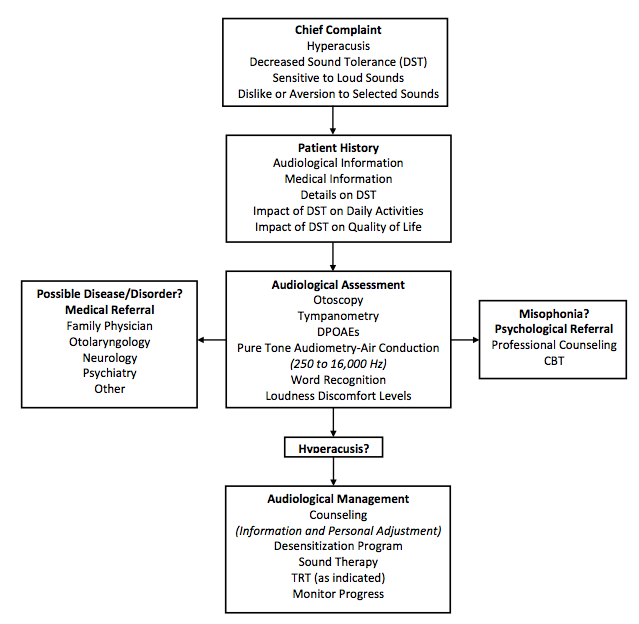
Figure 1. Protocol for the assessment of a patient with concerns about loud sounds from Dr. James Hall's 20Q on the topic.
I recommend pairing the Hall 20Q with this foundational article from hyperacusis expert David Baguley, Current Perspectives on Hyperacusis. While there is some overlap, reading both articles as well as reviewing the resources and references will help audiologists of all experience levels up their game when it comes to clinical care for adults and children with hyperacusis.
5. One topic that a lot of us are losing sleep over these days is over-the-counter hearing aids.
Yes. Over-the-counter (OTC) hearing aids are just one of many examples of disruption happening to audiology and healthcare. Fortunately, many 20Q articles have addressed disruption through the years and provided insight and recommendations.
One that immediately comes to mind is, OTC Hearing Aids and a 21st Century Pricing and Delivery Model - A Change Is Gonna Come. Kim Cavitt has a lot of great points in this article that you might want to ponder on those sleepless nights. First, she reminds us that audiology existed as a viable profession prior to 1977 when we were granted the ethical right to dispense hearing aids. She also notes that when reading glasses went over the counter, prescription eyeglass sales actually increased. A third key takeaway is that the regulation of over-the-counter hearing aids and amplification devices could actually be a very good thing, leading to the creation of a regulatory, technical and consumer protection framework. Kim is a rock star – she is a passionate advocate for our profession and has a solid track record of helping practices adapt and succeed in these changing times. Read the full article for context as well as recommendations on how audiologists can consider structuring their pricing and delivery models to leverage these imminent changes.
6. I hate change. And I don’t think I’m alone.
Yes, many of us feel that way but the truth is, everything is constantly changing, whether we like it or not. We are much more resilient than we give ourselves credit for.
We’ve certainly addressed this topic at 20Q. It was over 5 years ago when Robyn Cox provided us with the eye-opening 20Q: Hearing Aid Provision and the Challenge of Change. Her answers to Questions #19 and #20 in the article should be required reading for all clinical audiologists.
The topic of change in audiology also was recently covered in a 20Q by Kevin Franck from Mass Eye and Ear, Embracing Change in Audiology Practice. Kevin discusses changes to audiology and the hearing industry and how we can find our place within the new landscape. He specifically talks about self-fitting hearing aids, self-assessment of hearing, and other viable technologies that will soon be commonplace. Again, we come back to this idea that adapting to change will require expanding our services, focusing on the patient experience, and utilizing our full scope of practice.
7. Expanding services? What should I be thinking about?
Great question and 20Q has plenty of answers! I’ve already mentioned tinnitus and hyperacusis management, and here are a few additional ideas.
Forensic Audiology. Could you be an expert witness? Of course you could! Read Tom Thunder’s 20Q for considerations, to find out what makes a good expert witness, and for links on training to get started.
Interventional Audiology. Brian Taylor points out that age-related hearing loss is a very common chronic medical condition in older adults and there are millions of adults who, for whatever reason, do not/will not/cannot use hearing aids. He coined the term “interventional audiology”, which refers to an array of novel approaches to the management of age-related hearing loss on a broader scale. These might include online consultations, smartphone apps, Personal Sound Amplification Products or other hearing assistance technology, inter-professional collaboration, and other services. There are audiologists practicing interventional audiology today. They report benefits to the people receiving care, increased referrals, and increased recognition of the value of their expertise and audiology care in general to interprofessional colleagues and the public at large.
Auditory Brain Training. Nancy Tye-Murray gives three reasons to consider offering auditory brain training: 1) It allows audiologists to distinguish themselves from the competition; 2) It is a source of untapped revenue; and, 3) It is a means to provide patients with customized hearing healthcare.
How’s all that for a start?
8. A start? You mean there’s more?
Yes! Let me remind you about the importance of telehealth today. Are you offering any teleaudiology services in your practice?
Here are two great 20Q resources: Audiology to the People by De Wet Swanepoel and Teleaudiology - the Future is Now by Chad Gladden.
Our colleague from South Africa, De Wet Swanepoel, is an international expert on this topic. He makes the case that there is an unprecedented growth in hearing loss prevalence globally and an increased demand for hearing health services. There is a growing unmet need to access for audiology care, including here in the U.S. Increased capacity for service delivery through telehealth is one way of improving access to audiology care. This 20Q also includes a great video of De Wet conducting an actual online hearing test, as well as links to the audiology professional practice guidelines on teleaudiology.
Dr. Gladden discusses the VA’s implementation of teleaudiology, including obstacles, types of services offered via teleaudiology, benefits and outcomes. Regardless of the clinical setting you work in, there are lessons to be learned from this article. For those of you who fit hearing aids, you probably know that remote fittings and Internet-based hearing aid related counseling and services are becoming routine.
9. Expanding my services is all well and good, but what does 20Q offer to help me shore up my current clinical processes?
Our 20Q articles cover best practices over a wide range of services. Let’s start with hearing aids.
No discussion of hearing aid fitting is complete without mentioning verification using probe-mic measures. Probe-mic measurement utilizing validated prescriptive formulae remain the gold standard for verification of hearing aid fittings. It is to no one’s surprise that the probe-mic measurement guru himself, Gus Mueller, has written several 20Qs on this topic. Here are two of my favorites that will provide new information for audiologists regardless of experience with probe-mic measures: Real Ear Probe-Mic Measures, and Hearing Aid Verification Using AutoREMfit. The first provides an overview of why probe-mic measures are more relevant than other procedures, and why we need to get 100% of audiologists fitting hearing aids on board with using them. The AutoREMfit article, authored by Gus along with Todd Ricketts, discusses the new AutoREMfit procedure where the probe-mic equipment and hearing aid fitting software talk to each other. This automated process purports to be quicker and just as accurate as the traditional, more manual process. This may be true, but check out the concluding caveats that Gus and Todd offer.
10. Great. I’m on board with probe-mic measures and excited to learn about autoREMfit. Any other 20Q tips for hearing aid fittings?
There sure are. In Using the Aided Speech Intelligibility Index in Hearing Aid Fittings, Susan Scollie discusses how the aided Speech Intelligibility Index (SII) can lead to better hearing aid fittings for both children and adults. She provides a detailed and thorough review of the SII and includes many visual examples from verification software. The aided SII is important in long term outcomes for children who use hearing aids, and a known factor for speech recognition for all ages. Susan illustrates why 100% aided SII is not the goal, and why a higher SII is not necessarily always better. If you fit hearing aids, I recommend setting aside some time to review this 20Q article in depth.
11. What about outcome measures?
We’ve got you covered. In John Tecca’s 20Q, Outcome Measures in Clinical Practice, he includes a quote from a Robyn Cox article: “In the long run, it is the performance in daily living of the particular listener that determines the usefulness of a hearing aid fitting.” Outcome measures can help assess the usefulness of hearing aids for our individual patients in the real world, and John lays out how he has incorporated them into his practice.
12. When it comes to my older adult patients, what’s the latest on the link between hearing loss and dementia?
There’s no one better to answer that question than Nick Reed, an audiologist and researcher at The Cochlear Center for Hearing and Public Health at Johns Hopkins, directed by Dr. Frank Lin. In Hearing Loss and Dementia - Highlights from Key Research, Nick indicates that considering the research in this area, it is becoming safer to say that hearing loss increases the risk for dementia. There is a lot of nuance behind statements such as these, however. Nick cautions against presenting this information to patients as a definitive relationship such that having hearing loss means an individual will develop dementia - that is fundamentally false. I’ve seen a lot of misinterpretation out there in advertisements by audiologists and hearing aid dispensers. I urge everyone to read Nick’s careful explanations and interpretation of this research.
13. Got it. Let’s talk pediatrics. What are some 20Q highlights for pediatric audiologists?
There are many. Starting with assessment, I recommend Jace Wolfe’s articles on ABR assessment of hearing in infants - Protocols and Standards, and Getting It Right When it Matter Most.
He integrates information from key guidelines and clinical practice documents on the topic. In addition to describing the gold standard threshold assessment procedure, Jace provides many practical tips from his years of experience.
Next, check out Anne Marie Tharpe’s update on Unilateral Hearing Loss in Children. We know that children with unilateral hearing loss (UHL) have academic challenges at a much higher rate than children without hearing loss, and much progress has been made with regard to the early identification of UHL. However, more guidance for professionals is needed when it comes to management. Anne Marie discusses these issues and points us to a great resource: Quick Practice Guideline for assessing and managing UHL in children.
14. That is a great resource! Are we finished with peds?
Not yet. If you see children for testing, you may want to review your pediatric speech recognition protocols by reading Andrea Hillock-Dunn’s 20Q on this topic. While we know the importance of pure-tone thresholds, speech recognition testing with children can also provide critical information. Andrea indicates that speech recognition testing can: 1) Provide a cross-check for behavioral pure-tone results; 2) Help quantify benefit from amplification and assist in determining programming and audiologic management decisions (e.g., consideration of alternative devices, FM, need for additional classroom supports, etc.); 3) Provide a global metric for monitoring performance over time (sequential appointments); and, 4) Identify abnormal system functioning not predicted from the audiogram and possible retrocochlear involvement (anomaly).
Lastly, I’ll mention that while not many audiologists perform pediatric vestibular testing, we all can get a better understanding of the topic as THE experts on hearing and balance.
In Pediatric Vestibular Disorders and the Role of the Audiologist, Devin McCaslin cites a study that estimated 3.3 million US children have dizziness or balance issues! He recommends that audiologists who see children in their practices be able to:
- Identify age-appropriate motor milestones
- Know which disorders and syndromes are closely associated with dizziness
- Understand the tools and questionnaires that are available to screen children for vestibular impairments
- Know where to refer children for quantitative balance function testing and treatment
Check out his informative 20Q on this topic.
15. I thought you would have mentioned cochlear implants by now?
Easy tiger, by my count we still have 5 questions left.
Of course, 20Q has covered the exciting and rapidly changing topic of cochlear implants. In fact, international cochlear implant expert, Rene Gifford, was one of our very first 20Q contributors. Recently, in Outcomes of Children with Cochlear Implants, Jace Wolfe summarized key research on factors known to impact outcomes including age at implantation, auditory-based therapy, communication mode, maternal education, and medical and developmental issues.
Here is a fact I found surprising in this article: Research suggests that normal listening and spoken language skills are likely when children receive cochlear implants during the first year of life, yet current FDA guidelines, which have not changed for almost 20 years, call for a minimum age for implantation of 12 months. That’s something we all should be working to change.
Did you know that the American Academy of Audiology (AAA) published a new clinical practice guideline on the topic of cochlear implants in 2019? Jessica Messersmith, who was chair of one of the two task forces who developed this guideline, provided a summary of how such documents are developed, in her 20Q, An Overview of the New Cochlear Implant Practice Guidelines. The AAA document can be accessed here: https://www.audiology.org/sites/default/files/publications/resources/CochlearImplantPracticeGuidelines.pdf
16. Are there any areas of audiology practice that 20Q hasn’t covered?
I don’t think so! And while we certainly don’t have time to highlight all the other 20Q, bear with me while I point out a few more “must reads”.
17. Must reads? Do tell!
In Amplified Stethoscopes for Medical Practitioners, A.U. Bankaitis Smith, (The Audiologist Formerly Known as A.U. Bankaitis), explains the challenges of stethoscope use for professionals with hearing loss - both those who wear hearing aids and those who do not. She points out that there is no “one size fits all” solution. Fortunately, she reviews all possible options in her informative 20Q and lists these great resources to stay on top of the issue:
- Oaktree Products' website, stethoscope section: www.oaktreeproducts.com/amp-steth-solutions
- The Association of Medical Professionals with Hearing Loss: www.amphl.org
- Thinklabs One: www.thinklabs.com/hearing-aids
- Dr. Bankaitis Smith’s blog: www.aubankaitis.com
18. I'm bookmarking that one! Any other "must reads"?
Have you heard the term “hidden hearing loss”? Dr. Sharon Kujawa explains what is meant by this term and reviews synaptopathy research. It’s a fascinating area that may indeed have future clinical implications. Dr. Kujawa and her colleagues at the Mass Eye and Ear were awarded a Clinical Research Center Grant (P50) from the NIH/NIDCD to support research in this area. How fortunate we are to have her contribution to 20Q, Cochlear Synaptopathy - Interrupting Communication from Ear to Brain.
19. Thanks, Carolyn! This has been an information-packed discussion and it’s been fun reviewing 20Q highlights. I wonder if Dr. Mueller has a favorite 20Q?
Let’s ask him!
Gus Mueller: Well, as an editor, my favorite articles are always the ones that come in two months ahead of the deadline! But, I certainly would agree with Carolyn’s choices regarding some of the most noteworthy ones. If you look at our list of authors from over the years, it’s a Who’s Who of audiology—so really, all the articles are pretty darn good.
I guess if you told me that we ran out of space on the server, and we had to delete all but one 20Q, the one that I would save is: The Right Ear Effect—Going Strong After 50 Years, written by Doreen Kimura. This 20Q included comments from Jim Jerger, Jack Katz, and Frank Musiek. Having one of the most famous and respected neuropsychologists of our time willing to contribute an article for an online journal that she had never heard of, was a big deal—a very big deal. I was a little concerned that she would find the question and answer format a little too hokey, but she claimed she enjoyed writing the piece. The comments from Jim, Jack and Frank just made the article all the more priceless. I suspect that most AuD students today have no idea who Doreen Kimura was, so I encourage them to read this one.
Carolyn Smaka: Sorry to butt in here Gus, but what about the Yogi Berra 20Q? That was a fan favorite with over 10,000 views and a 5-star rating! Are you still upset over the Rockies’ lousy season?
Gus Mueller: Well, that article certainly did have an all-star cast of authors who were all editors of audiology journals. And I think the analogies in that article would have made Yogi proud. But you’re right, 2019 was not a good year for my favorite team, so yeah, I'm trying to put baseball out of my mind.
20. Gus, while we have you here, what’s your vision for the next 10 years of 20Q?
Gus Mueller: It all starts with good writers who have good information to share. Most of our readers are clinicians, and I’m always looking for articles that provide some Monday Morning tips. I’m sure that some of the topics won’t change much from the past. We’ll still be talking about various modifications of diagnostic procedures, advances in cochlear implants and pediatric audiology, and why audiologists don’t seem to embrace audiologic rehabilitation. The launch of OTC hearing aids in the next year will no doubt generate a few articles. Who knows, within a few years, the 20Q on hearing aid verification might involve a discussion of what company has the most effective kiosk fitting! And, the best articles will likely be the ones that I can’t imagine today. Fortunately, the beauty of an online journal is that we can have an article posted within a couple of months from when the idea was hatched by the author—so stay tuned!
References
All the 20Q articles referenced are accessible via the links in this article and can also be found at www.audiologyonline.com/20Q
Additional references:
Henry, J.A., Griest, S., Zaugg, T.L., Thielman, E., Kaelin, C., Galvez, G., & Carlson, K.F. (2015). Tinnitus and hearing survey: a screening tool to differentiate bothersome tinnitus from hearing difficulties. Am J Audiol, 24(1), 66-77. doi:10.1044/2014_AJA-14-0042
Meikle, M.B., Henry, J.A., Griest, S.E., Stewart, B.J., Abrams, H.B., McArdle, R., . . . Vernon, J.A. (2012). The tinnitus functional index: development of a new clinical measure for chronic, intrusive tinnitus. Ear Hear, 33(2), 153-176.
Newman, C.W., Sandridge, S.A., & Jacobson, G.P. (1998). Psychometric adequacy of the tinnitus handicap inventory (THI) for evaluating treatment outcome. J Am Acad Audiol, 9(2), 150-160.
Taylor, B., & Mattson, S. (2016, November). The role of audiology in an evidence-based tinnitus program. AudiologyOnline, Article 18711. Retrieved from https://www.audiologyonline.com
Bonus Fun
If you’re reading only for continuing education, you can stop now. The following bonus section is strictly for die-hard 20Qers who enjoy useless fun facts and trivia.
20Q Fun Facts
As of October 2019:
95 articles
400,000+ page views
68,000 hours of continuing education earned
12,000+ individual readers
Average course rating: 4.5 out of 5
Logos
This is the original 20Q logo, used from 2011 - 2018.
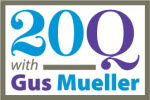
This logo was rejected by Gus because, in his words, “It reminds me of the Pep Boys logo.”
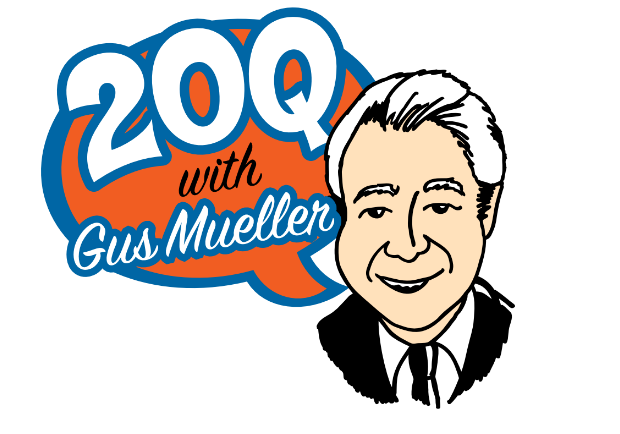
Here are a few other rejected logos from the vault:
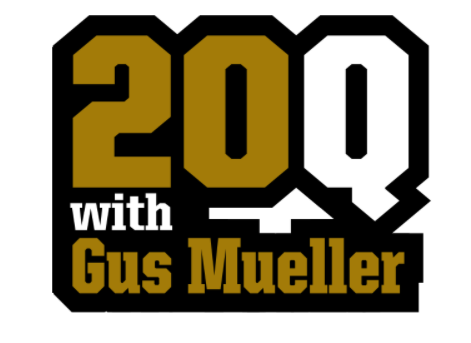
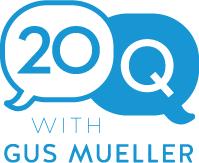
Best 20Q Course Evaluations
20Q readers are awesome! Thank you for all of your enthusiasm and feedback over the years. We read each and every course evaluation and appreciate the time you take to write in.
The 20Q format is perfect for adult learning especially for professionals with time constraints. It is readable, informative and helpful even for those with years of experience in the field.
Excellent information presented via 20 questions is a quick way to learn something new for busy clinicians. 20Q always provides valuable information.
The 20Q are my favorite courses because they're always super interesting and easy to understand!
20Q Strategic Meetings
Here is a photo from the inaugural 20Q Summit Meeting, at the Ear Inn, New York City.

The 2nd Global 20Q Summit Meeting was held in 2016 at the Gotham Comedy Club in New York City. It’s very strange that no photo evidence of this meeting exists in Carolyn’s or Gus’ files. Hmmm.
Personal note from Carolyn
On behalf of AudiologyOnline, I would like to thank Gus for bringing 20Q to us initially, and for consistently delivering up great content month after month for the past 10 years. Anyone who has been lucky enough to work with Gus on any project knows that the results will always be excellent, and getting there will always be fun. Playing my small part behind the scenes at 20Q has definitely been a professional highlight. And thanks to all of our dedicated 20Q readers! Here’s to the next 10 years and beyond - cheers!
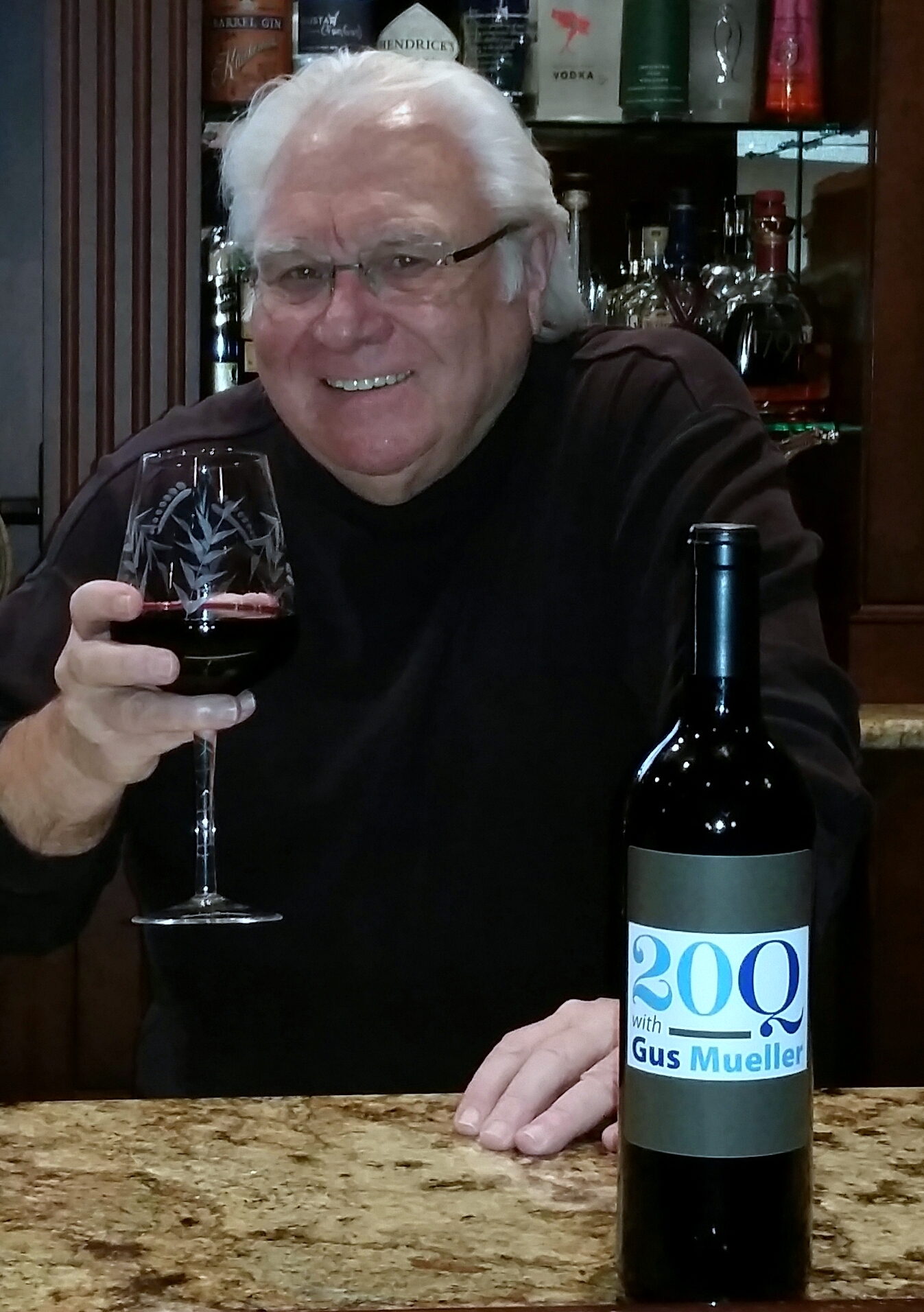
Actual Motherload Diamond Mountain Napa Red Blend, custom made for 20Q. This rare vintage can only be found in stock at the Gus Mueller Homestead Pub and Distillery, Bismarck, North Dakota.
Citation
Smaka, C. (2019). 20Q: Ten years of expert insight and resources. AudiologyOnline, Article 26170. Retrieved from www.audiologyonline.com

